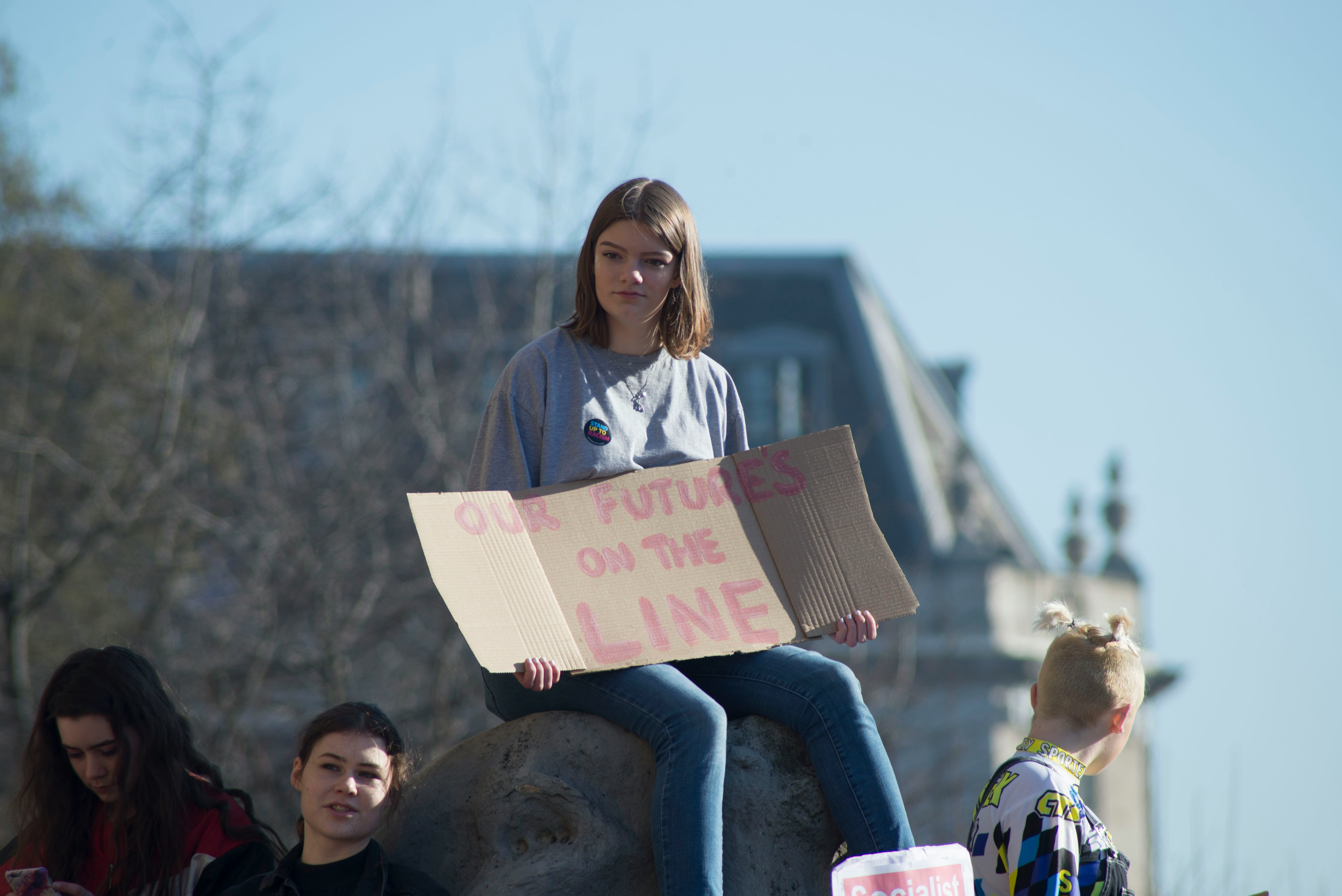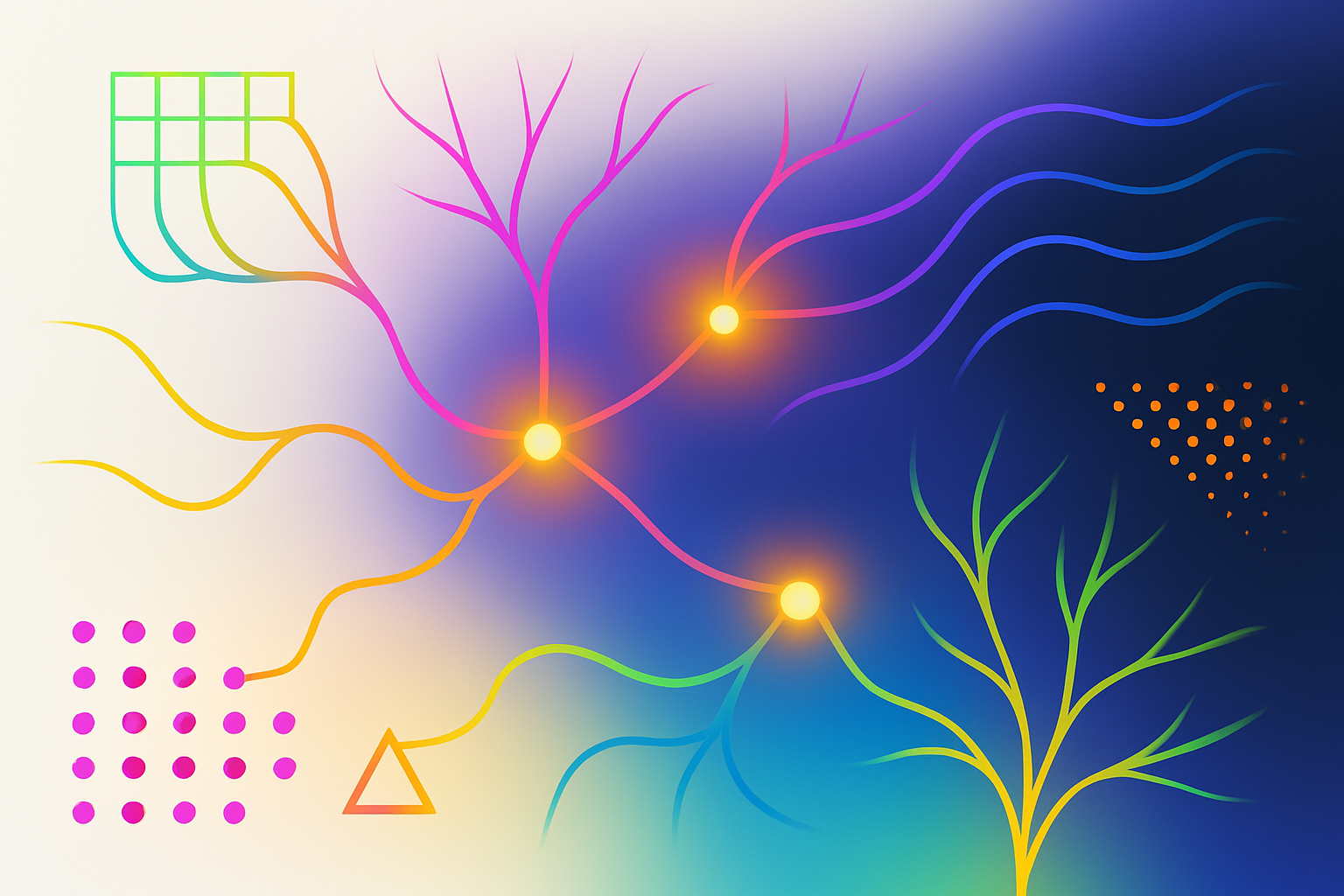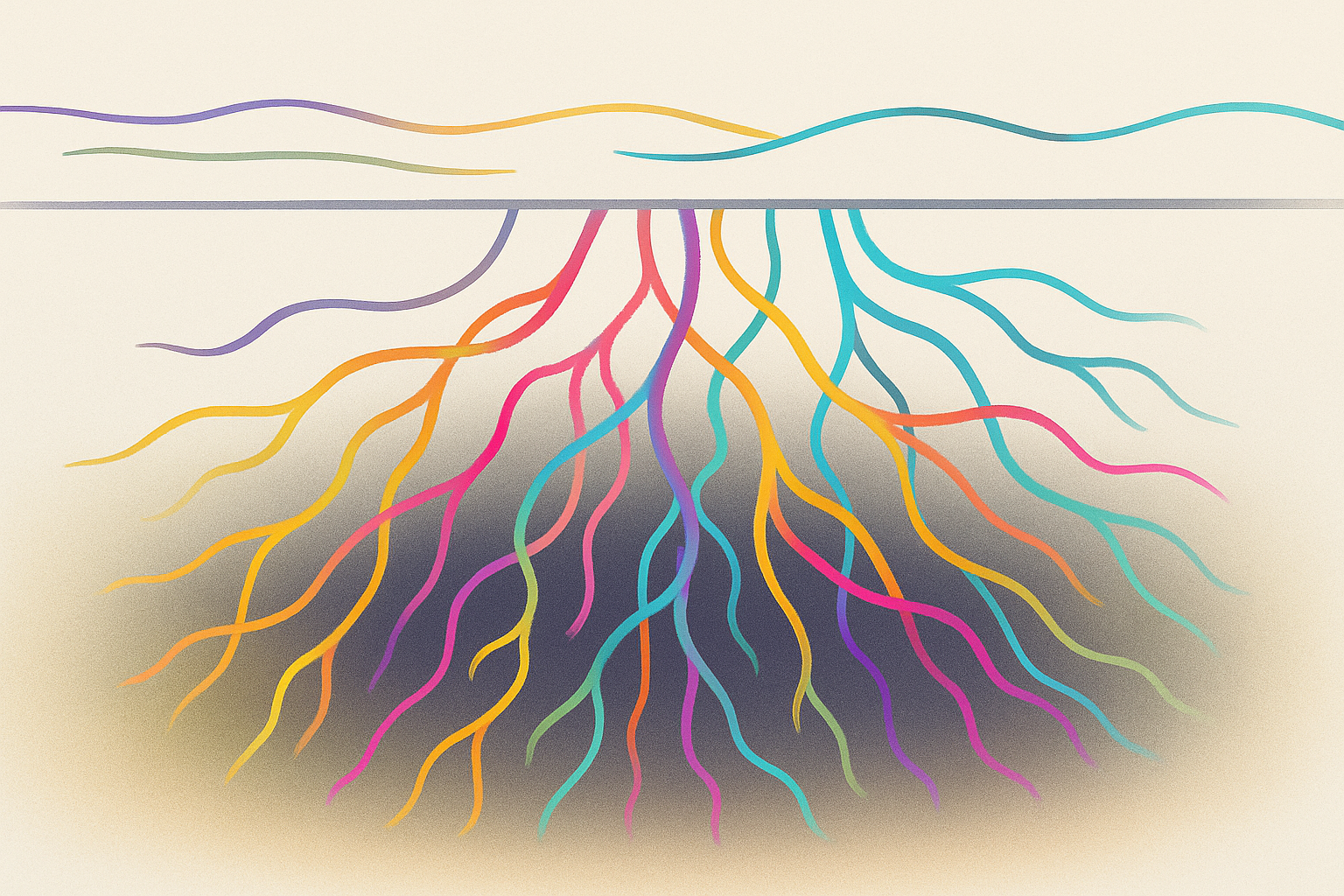
 John Moravec
John MoravecLearning together, teaching together
The trouble with separating learners by age silos
In most schools today, students are grouped strictly by age, progressing year by year in parallel cohorts. While this structure simplifies scheduling and curriculum delivery, it also narrows the social and cognitive range of experiences available to learners. Children primarily interact with others who are at the same developmental stage, and adults (parents, elders, neighbors) are typically relegated to the margins of formal learning. Education, under this model, becomes something done to children, not with children or their broader communities.
Age-based grouping in education emerged from industrial-era ideals of efficiency and control, simplifying instruction but narrowing learners’ exposure to diverse perspectives. Outside of school, we rarely live, work, or solve problems only with people our age. Yet schools isolate learners from one of the richest educational resources available: each other.
But learning has never truly been age-bound. Across cultures and throughout history, knowledge has been passed down through shared labor, storytelling, imitation, and dialogue between generations. Farmers and blacksmiths taught apprentices; grandparents taught traditions and values; siblings learned by doing together. These organic learning arrangements fostered trust, resilience, and a sense of shared purpose. They also allowed individuals to move fluidly between roles as learners and teachers.
Today, research confirms the value of intergenerational learning. Studies show that older students who mentor younger ones develop empathy, leadership skills, and a deeper understanding of their own knowledge. Younger students gain confidence, personalized support, and inspiration. Adults who engage in learning communities with youth report increased well-being, renewed purpose, and stronger social ties. Children benefit from exposure to diverse life experiences, cultural practices, and problem-solving approaches that no textbook could offer (Newman & Hatton-Yeo, 2008; Kaplan, 2002).
Intergenerational learning is vital for navigating the complexity of modern life. No one generation holds all the answers. Elders bring historical memory and lived wisdom, while younger people offer adaptability and new ideas. When these perspectives are brought together, education shifts from rote instruction to relational learning. This facilitates an exchange of insight, care, and shared problem-solving.
From Manifesto 25:
Learning together, teaching together. Education thrives when everyone becomes both a teacher and a learner. By breaking free from artificial age silos, schools can evolve into vibrant hubs where children, parents, elders, and community members exchange skills, insights, and creativity as open knowledge and networking ecosystems. Older students mentor younger peers while gaining fresh perspectives, and parents and community leaders bring real-world knowledge, enriched by the curiosity of children. This dynamic, reciprocal process celebrates intergenerational wisdom, strengthens social bonds, and empowers all to shape a meaningful future.
Learning beyond age silos
Outside of school, we rarely live, work, or solve problems only with people our age. Family life, community organizing, and professional collaboration all depend on navigating relationships across generations. Yet in schools, children are often denied these opportunities. They are placed in chronological silos, missing the chance to learn from the broader human experience.
Breaking this structure requires redesigning schools as shared ecosystems of knowledge. In such environments, older students are learners and mentors, contributing experience and modeling growth. Younger students are not simply recipients, but participants whose questions and perspectives spark new insights. Educators, too, can learn alongside students, modeling intellectual humility and curiosity.
The benefits of breaking down age silos are well-documented. Peer tutoring programs consistently show gains for both tutor and tutee, with improvements in academic performance, communication skills, and self-confidence. Mixed-age classrooms, common in Montessori and democratic schools, tend to foster collaboration, autonomy, and emotional intelligence. Community-based learning initiatives that bring together children, parents, and elders create space for cultural exchange and civic connection.
When schools welcome people of different ages into learning processes, they become civic spaces. Learning becomes embedded in relationships, and education gains social depth. In these environments, people are seen for what they can contribute, not for what knowledge or skills they lack. This signals a shift away from deficit thinking. The classroom expands, and so does the imagination of what education can be.
Everyone a learner, everyone a teacher
In a highly-functional educational ecosystem, roles are fluid. Children can teach. Elders can learn. Teachers can admit uncertainty. Parents can model curiosity. The notion that knowledge flows only in one direction (i.e., from an expert to a novice) misses the richness of human experience and the development of personal knowledge at the expense of transmitting information. In reality, as personal knowledge is constructed continuously, we are all both learners and teachers, often at the same time.
Recognizing this reciprocity requires a shift in mindset. It means honoring the insight that can emerge from any person, regardless of their age, title, or credentials. A younger student might teach an older one how to code. A grandparent might pass on storytelling techniques or gardening wisdom. A local artist might co-create a mural with children, blending technique with imagination.
To nurture a culture where everyone teaches and learns, we must design educational environments that facilitate these reciprocal exchanges. This means creating spaces (physical, social, and cultural) that bring generations together around shared experiences. There are many examples in both formal and nonformal contexts:
- Multigenerational learning hubs: Schools can partner with local libraries, community centers, and makerspaces to create hubs where elders and youth engage in joint projects. For example, Whatcom Intergenerational High School in Washington state incorporates regular visits from community elders who help co-lead seminars, fostering critical dialogue across age groups. These hubs offer both formal and informal learning experiences, combining mentorship, storytelling, and collaborative problem-solving.
- Timebanking and skill-sharing networks: Inspired by community time bank models, schools can implement systems where people offer their expertise in exchange for learning something new. A retired mechanic might teach hands-on physics through bicycle repair; a teenager could tutor digital skills in return. The Intergenerational Learning Center at St. Joseph’s Home in Singapore is one such example, where elders and children regularly engage in reciprocal caregiving and storytelling activities.
- Gardens and outdoor classrooms: Shared cultivation projects offer a powerful setting for learning. In Japan, intergenerational learning gardens, such as Okayama Education for Sustainable Development Project, bring elders and children together to grow vegetables, discuss seasonal changes, and exchange cultural knowledge. These gardens not only deepen understanding of ecological cycles and food systems but also strengthen respect across generations. Research by Wang, Huang, & Lee (2023) supports that such programs foster emotional bonds, improve dietary knowledge, and create collaborative learning experiences across age groups.
- Co-designed curriculum projects: Students, parents, and community members can collaborate to co-design parts of the curriculum. For example, in some New Zealand schools influenced by Māori pedagogies, whānau (extended family) participate in planning and delivering content tied to cultural history, values, and language (Neha, Reese, Schaughency, & Taumoepeau 2020). This approach centers learning as a collective responsibility and embeds it in place, identity, and belonging.
- Neighborhood and community networks: Instead of isolating learning in classrooms, schools can adopt a networked approach, encouraging students to conduct oral histories, map neighborhood assets, or work with civic leaders on local challenges. Intergenerational projects grounded in local context make learning tangible and participatory. One example is the Shibuya University Network, which facilitates free, community-interest classes for and by people from all walks of life.
Across these strategies, the goal is to move beyond token involvement and toward genuine collaboration. Intergenerational learning becomes transformative when all participants feel valued, responsible, and capable of contributing. It is not about transferring static knowledge from old to young, but about forming living relationships that adapt and grow.
In designing for this kind of education, we must ask: Who is included in the learning process? Whose knowledge counts? How can we create ecosystems where everyone, regardless of age, has a role to play in shaping what we know and how we live together?
By empowering everyone to teach and learn, education becomes less about status and more about participation. It becomes less about control and more about contribution.
Strategies for cultivating intergenerational learning
To move from aspiration to reality, intergenerational learning must be supported through structures that promote trust, collaboration, and shared responsibility. Below are five practical strategies, each grounded in real-world models that schools and communities can adopt to create vibrant, reciprocal learning ecosystems.
- Create shared learning spaces: Design welcoming environments where learners of all ages collaborate on shared projects. These might include multi-use classrooms, makerspaces, public libraries, or outdoor learning hubs that invite informal gathering and exploration. Successful shared learning spaces depend on flexible infrastructure that accommodates a wide range of physical, sensory, and social needs. Design must prioritize comfort, accessibility, and openness to allow people of all ages to move, rest, and interact comfortably. Just as important is a shared governance model that invites all participants, including children and elders, to help define how the space is used and maintained. These co-created norms foster trust, accountability, and a sense of belonging.
- Foster peer mentorship across ages: Build routines that pair older students with younger ones for academic help, creative projects, or personal storytelling. Older mentors gain leadership skills, while younger students receive encouragement and personalized guidance. Mentorship programs require intentional scheduling:dedicated time within the school day when students can build trust across age groups. Older students benefit from basic training on how to support their younger peers, as well as opportunities to reflect on the experience and their growth as mentors. These programs thrive when schools recognize mentorship not as an extracurricular add-on, but as a core learning activity, validating the time and attention it takes to build strong relationships.
- Invite community members to co-teach: Create regular opportunities for parents, elders, artisans, and local workers to share their skills and stories in the classroom alongside formal educators. For co-teaching to succeed, school leadership must be open to redefining who counts as a “teacher.” This includes revisiting policies around classroom access, safety, and instructional design. Curriculum frameworks should include space for community-based knowledge and allow for nonlinear, experience-driven approaches to learning. Crucially, building and maintaining trust with community partners requires sustained outreach, listening, and responsiveness, particularly with groups who have historically been excluded from schools.
- Embed learning in real community projects: Shift classrooms into neighborhoods. Let intergenerational teams work on local challenges such as ecological restoration, food justice, or oral history. Schools must build long-term relationships with community organizations, civic leaders, and families to co-design learning projects that are relevant, respectful, and rooted in place. This requires partnership agreements that define roles, expectations, and mutual benefits. Assessment models also need to evolve, valuing process, collaboration, and impact over narrow content delivery. Finally, these projects demand time. Longer cycles of engagement that allow trust to form, challenges to emerge, and solutions to evolve.
- Honor diverse literacies and ways of knowing: Treat oral traditions, embodied practice, and lived experience as valid forms of knowledge beyond written text or standardized content. Educators must be supported in developing culturally sustaining pedagogies that embrace multiple literacies such as storytelling, movement, craft, or digital creation. This involves both professional learning and structural flexibility to allow different modes of assessment, expression, and feedback. Classrooms must also become dialogic spaces, where knowledge is built through conversation, reflection, and performance rather than extracted through tests or rigid assignments.
Intergenerational learning reflects how humans have learned for most of history. When we open schools to the wider world and allow every person to play both teacher and learner, education regains its social purpose. It becomes a living system of reciprocity, rooted in trust, connection, and shared growth.
By inviting diverse voices, blurring age boundaries, and valuing everyday wisdom, we create not just more inclusive classrooms, but stronger communities. The future of learning is enhanced through our willingness to learn with and from one another: across generations, backgrounds, and lived experience.
Education thrives when it stops drawing lines between us and instead builds the bridges we all need.
Read and sign Manifesto 25 at https://manifesto25.org
References and recommended readings
Kaplan, M. S. (2002). Intergenerational programs in schools: Considerations of form and function. International Review of Education, 48(5), 305-334. https://doi.org/10.1023/A:1021231713392
Neha, T., Reese, E., Schaughency, E., & Taumoepeau, M. (2020). The role of whānau (New Zealand Māori families) for Māori children’s early learning. Developmental psychology, 56(8), 1518–1531. https://doi.org/10.1037/dev0000835
Newman, S. and Hutton-Yeo, A. (2008) Intergenerational learning and the contributions of older people. Ageing Horizons, 8, 31-39.
Wang, P. C., Huang, J. W., & Lee, D. C. (2023). Participation in Intergenerational Food and Agriculture Education Programs Effectively Promotes Place Attachment. International journal of environmental research and public health, 20(5), 4616. https://doi.org/10.3390/ijerph20054616



